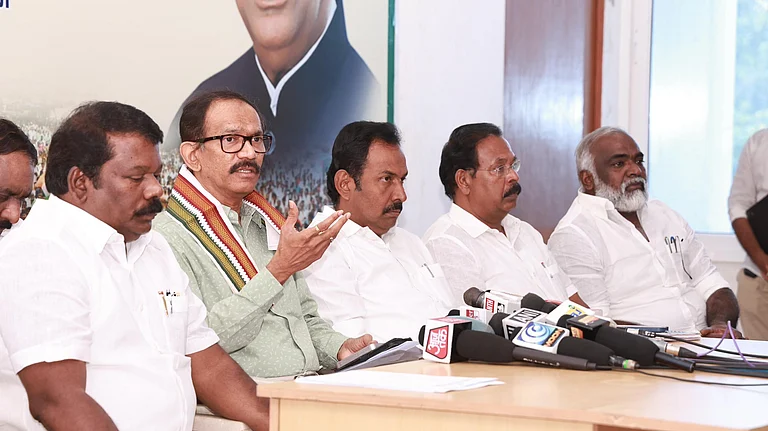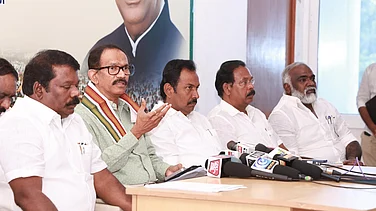Much water flowed out of Bangalore’s Hulimavu lake without warning on a bright Sunday afternoon last week. It wasn’t the rain to blame, but someone had damaged the tank bund causing untold misery to hundreds of residents downstream. Many became refugees at a makeshift shelter and the list of belongings lost or destroyed—documents, household appliances, cars—only grew. As does Bangalore’s litany of lake woes—the Hulimavu lake breach near the southern fringe of the city was the third of a water body spilling over in about a month. None of them are as well known as the city’s biggest tank, Bellandur, which periodically makes news countrywide for its dramatic visuals of foam rising up several feet or, at the other extreme, seething water. But Bangalore has close to 200 lakes within its municipal limits and litigation over their upkeep is a perennial feature; encroachments and sewage inflow being the main challenge. Occasionally, fish deaths have occurred in some lakes because of sewage and low oxygen levels.
This June, the Karnataka High Court asked the state government to appoint the National Environmental Engineering Research Institute (NEERI), a CSIR lab, to study the condition of lakes in Bangalore and suggest measures for their restoration.
In Bangalore’s software boom years of the early 2000s, the government created a Lake Development Authority (LDA) to protect and oversee water bodies that different public agencies managed. But the LDA was subsequently wound up. In 2011, the hight-court-appointed Justice N.K. Patil committee laid out an action plan for the preservation of the lakes following which, in 2014, the government passed the Karnataka Tank Conservation and Development Authority Act to create a new nodal agency.
“There are some positive provisions in that law. That authority is supposed to be the oversight authority, but even that has been dysfunctional,” says Leo Saldanha of Environment Support Group, which has led some of the litigation over lakes. “We have created the institutional network, developed the guidelines and shown how this can be turned into functional ecosystems.” But when it comes to various agencies taking their custodial rights seriously, there’s been a total collapse, he observes.

At Hulimavu too, the lake breach only amplified the confusion about which agency actually managed the lake—the Bruhat Bangalore Mahanagara Palike or the Bangalore Development Authority. As for the damaged bund, a police investigation is currently on to establish how it happened—initial reports indicate that there had been some digging near the bund ostensibly to lay a pipe.
Bangalore’s lakes have a long history. Nearly all of them are manmade, some of them a few centuries old, and are interconnected. They form a complex network of water bodies, which once provided the town its drinking water. Tank building, we are told, mostly continued into the late 19th century—by then, however, the newly constructed Hessarghatta lake along the Arkavati river became the main water source for the city’s residents. In the late 1960s, the government drew up a plan to pump Cauvery river water to Bangalore—100km away. As ecologist Harini Nagendra writes in Nature and the City, lakes as a water source became less important to administrators and planners in a growing city.
Over the decades, many of the dry lake beds were converted for urban requirements—reports note that by 1985, there were about 43 disused tanks in the city. Indeed, Bangalore’s main bus terminus, its multi-purpose stadium and several residential layouts all came up on lake beds. In recent years, however, there’s been increasing citizen activism through campaign groups to protect lakes from encroachments.
The question of disappearing lakes featured even in court hearings this year when the civic agency BBMP accepted that constructions had come up on 19 lakes. “Today, we are at a stage when none of the authorities has any precise answer to the question of number of lakes which were in existence in the city,” the Karnataka High Court observed in its June 18 order. The audit by NEERI includes identifying disappeared lakes, besides suggesting short- and long-term measures for restoration, rejuvenation and maintenance of the city’s lakes.
Of course, over the years there have been initiatives by civic agencies to restore several lakes. But these efforts are often piecemeal approaches, seldom looking at the larger picture, reckons Harini Nagendra, professor of sustainability at Azim Premji University. “One lake gets rejuvenated here, another lake is restored there. This is an entire system of lakes. The overflows need to be maintained, wetlands upstream and vegetation around the lakes need to be maintained,” she tells Outlook.
Besides, civic agencies tend to approach restoration from a civil engineering point of view, she says. “I think we focus on concreting and things like that. We are not looking at it from a hydrological perspective. That’s what we should be doing,” says suggests.
Leo Saldanha says typical rehabilitation work veers towards a ‘soup bowl’ design in which the gradual shorelines of the lakes are deepened. “That actually worsens the condition,” he argues. “Seventy per cent of the biodiversity is in what we call the shallows. Shallow waters are also important in lakes because they help clean the water. What we have done is not only damaged the lake structure but also filled it with dirty water.”
The 2011 Patil committee report had laid out several recommendations—a 30-metre buffer zone around the lake area, fencing the perimetre, creating watch-and-ward groups and clearing blocked or encroached drains and taking up repairs on priority. “We are now waiting for the NEERI report to know the status of compliance of these recommendations,” Saldanha says.
By Ajay Sukumaran in Bangalore


























